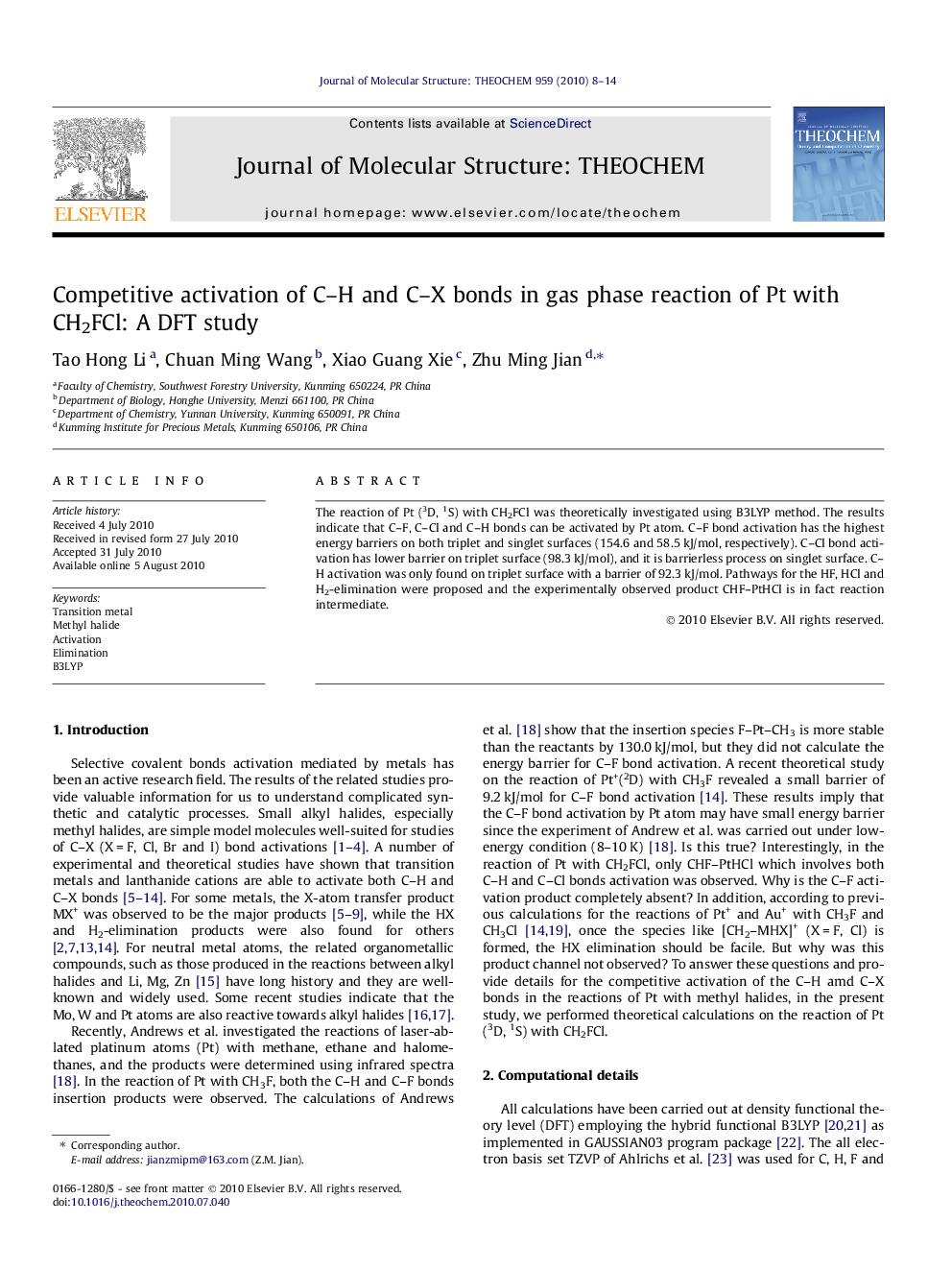| Article ID | Journal | Published Year | Pages | File Type |
|---|---|---|---|---|
| 5416490 | Journal of Molecular Structure: THEOCHEM | 2010 | 7 Pages |
Abstract
The reaction of Pt (3D, 1S) with CH2FCl was theoretically investigated using B3LYP method. The results indicate that C-F, C-Cl and C-H bonds can be activated by Pt atom. C-F bond activation has the highest energy barriers on both triplet and singlet surfaces (154.6 and 58.5Â kJ/mol, respectively). C-Cl bond activation has lower barrier on triplet surface (98.3Â kJ/mol), and it is barrierless process on singlet surface. C-H activation was only found on triplet surface with a barrier of 92.3Â kJ/mol. Pathways for the HF, HCl and H2-elimination were proposed and the experimentally observed product CHF-PtHCl is in fact reaction intermediate.
Related Topics
Physical Sciences and Engineering
Chemistry
Physical and Theoretical Chemistry
Authors
Tao Hong Li, Chuan Ming Wang, Xiao Guang Xie, Zhu Ming Jian,
